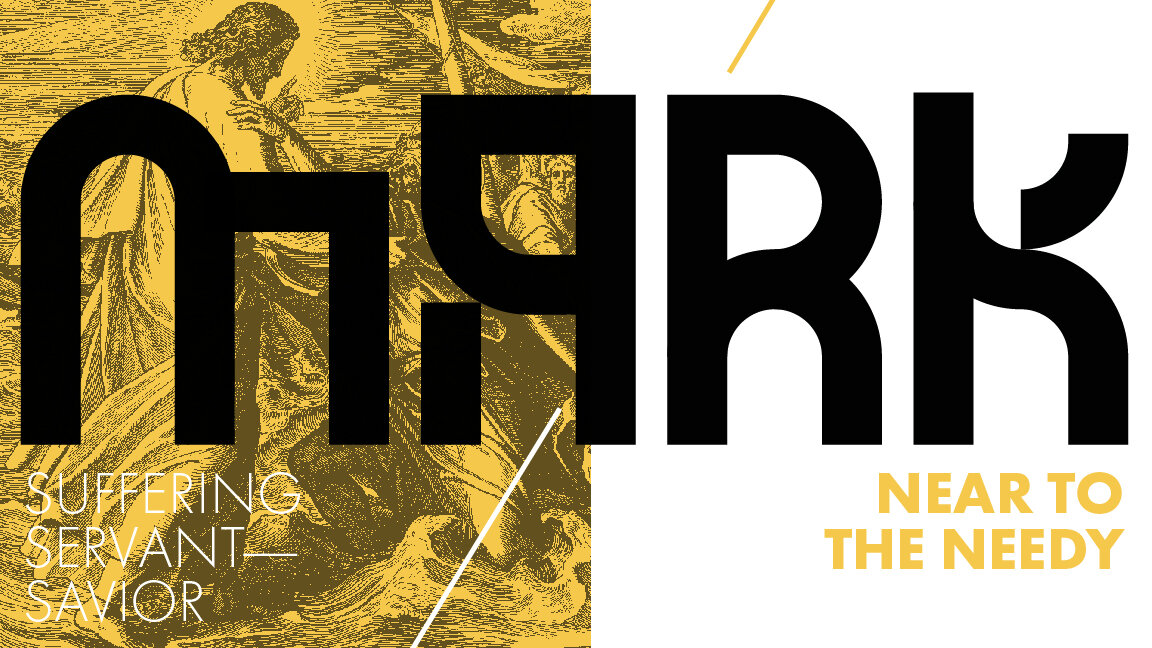CCLI License #5060866
Worship Service | May 16, 2021
"All the Poor and Powerless"
David Leonard, Leslie Jordan
© 2011 Integrity's Praise! Music, Little Way Creative
"Jesus Is Better"
Aaron Ivey and Brett Land
© 2013 Aaron Ivey Designee, Austin Stone Music, worshiptogether.com songs
"Father You Are All We Need"
Brian Eichelberger, Dustin Kensrue, and Zach Bolen
© 2014 Dead Bird Theology, E On The Eye Chart, Erase And Rewind, Songs From The Penalty Box, We Are Younger We Are Faster Music
"I Surrender All"
Words: Public Domain, Music: Public Domain
CCLI License #5060866
Worship Service | May 9, 2021
CCLI License #5060866
Worship Service | May 2, 2021
“In Tenderness”
Nate Garvey, Spencer Walton
Words: Public Domain
Music: © 2013 It's All About Jesus Music, We Are Younger We Are Faster Music
“God Is Good”
Dustin Kensrue
© 2013 Dead Bird Theology, It's All About Jesus Music, and We Are Younger We Are Faster Music
“Fix My Eyes”
Brian Eichelberger, Chad Gardner, and Naida Essenpreis
© 2014 Asaphs Arrows, Moms Like Us Too, Remaining portion is unaffiliated
“Good, Good Father”
Anthony Brown, Pat Barrett
© 2014 Capitol CMG Paragon, Common Hymnal Publishing, Housefires Sounds, sixsteps Music, Tony Brown Publishing, Designee Vamos Publishing, worshiptogether.com songs
CCLI License #5060866
Worship Service | April 25, 2021
CCLI License #5060866
Worship Service | April 18, 2021
CCLI License #5060866
Worship Service | April 11, 2021
"Psalm 145"
Brian Eichelberger and Dustin Kensrue
© 2013 © Dead Bird Theology (Admin. by Music Services, Inc.), It's All About Jesus Music (Admin. by Music Services, Inc.), and We Are Younger We Are Faster Music (Admin. by Music Services, Inc.)
"Lord I Need You"
Christy Nockels, Daniel Carson, Jesse Reeves, Kristian Stanfill, Matt Maher
© 2011 sixsteps Music, Sweater Weather Music, Thankyou Music, Valley Of Songs Music, worshiptogether.com songs
"Grace Alone"
Dustin Kensrue
© 2013 Dead Bird Theology, It's All About Jesus Music, We Are Younger We Are Faster Music
"What a Friend We Have in Jesus"
Charles Crozat Converse, Joseph Medlicott Scriven, Lee Behnken
© 2007 Lee Behnken Ministries
CCLI License #5060866
Why Did Jesus Go Up On The Mountain To Pray?
It’s impossible in a single sermon to say everything that there is to be said about a particular text.
That means, for each sermon you hear, there is a heap of observations, insights, connections, and applications that didn’t make the cut. One important (and difficult!) job of the preacher is to make decisions about what to bring into the pulpit on Sunday and what to leave out.
Last Sunday’s sermon was no exception. One verse that I touched on only briefly is Mark 6:46—
45 Immediately he made his disciples get into the boat and go before him to the other side, to Bethsaida, while he dismissed the crowd. 46 And after he had taken leave of them, he went up on the mountain to pray. (Mark 6:45–46)
Time didn’t allow me to say everything I wanted to say about this verse and Jesus retreating to the mountain to pray, so I thought I would take a little time here and make a few additional comments.
Jesus Praying in Mark
We only see Jesus praying three times in the entirety of Mark’s gospel (Mark 1:35; 6:46; 14:32–39).
Each of these instances represent a significant moment in His ministry—a crisis or significant decision, as commentator James R. Edwards explains:
Each prayer is at night and in a lonely place, each finds the disciples removed from him and failing to understand his mission, and in each Jesus faces a formative decision or crisis. Following the feeding of the five thousand, Jesus reaffirms by prayer his calling to express his divine Sonship as a servant rather than as a freedom fighter against Rome. (197)
On Sunday I referenced John 6:15, which makes the crisis Jesus was facing clear, at least in part:
Perceiving then that they were about to come and take him by force to make him king, Jesus withdrew again to the mountain by himself. (John 6:15)
As Edwards notes, the crowds wanted a king who would deliver them from Roman rule. Jesus, however, came to be a suffering servant-King who would rescue His people from their sin.
While this is certainly an aspect of the crisis Jesus was facing, I don’t think it tells us the entire story about why Jesus went up on the mountain to pray in Mark 6.
The Disciples’ Hard Hearts
The most significant opposition that Jesus faced on the heels of the feeding of the five thousand (Mark 6:30–44) wasn't the crowds, but rather His own disciples. Verses 51–52 tell us:
51 And he got into the boat with them, and the wind ceased. And they were utterly astounded, 52 for they did not understand about the loaves, but their hearts were hardened.
Jesus’ disciples didn’t understand about the loaves. They witnessed the miraculous feeding first-hand. They distributed the bread to the people. They ate and were satisfied. They took up twelve baskets full of leftovers. And still, their hearts were hardened.
This puts the disciples in the company of the Pharisees whose hardness of heart, in chapter three, grieved Jesus (Mark 3:5). If the hardness of heart of the Pharisees grieved Jesus, how he must have been grieved by the hardness of heart of His own disciples!
A Time to Speak and a Time to Pray
Jesus’s response to His disciples’ hard-heartedness, unbelief, and lack of understanding is instructive for us. What did Jesus do in the face of this opposition? He went up on the mountain to pray.
So often, our own response to this kind of opposition is to speak more and do more. “If I share more information, present another argument, recommend another book, or repeat the important details that they might have missed,” we tell ourselves, “then maybe they’ll understand and respond to Jesus in faith.”
While faith does come from hearing (Romans 10:17), hard hearts aren’t overcome with mere words. Heart-change is work that God alone can do, by the power of His Spirit. In fact, one of the promises of the New Covenant is a new heart (Ezekiel 11:19), given by God Himself.
So, then, whether we’re talking about a sister in Christ who is hardening her heart by walking in sin or a friend who, out of hardness of heart, rejects the gospel completely, there comes a time when the best thing for us to do is, not to speak, but to retreat to a quiet place and pray to the Lord on their behalf, asking Him to soften their hard hearts.
How To Setup and Use a Prayer Journal
In last Sunday’s sermon, I shared that one of my hopes for us as a church in this season of coronavirus social distancing is a deep and profound spiritual reformation of our souls. With so many excuses of busyness and distraction stripped away, I want to encourage you to really pursue God through prayer right now.
One way to do that is by starting a prayer journal. This is a practice I’ve been using for some time and I want to share with you below how I set up and use mine.
What You Need
All you need to start is a notebook and a pen. I would encourage you to use a separate, dedicated notebook for this rather than including it within a personal journal, a place where you keep sermon notes, etc. My current prayer journal notebook of choice is the Moleskine Subject Cahier XL.
Note: the Moleskine Subject Cahier does not come with pre-numbered pages. To remedy that, I simply go through and number all of odd pages in the top left corner—which is a strangely satisfying exercise for me.
Setup
The following is a page-by-page rundown, organized by sections, for how my prayer journal is set up. The sections will make more sense when I talk about how I use them below. Your implementation will surely differ, I simply offer this to you as an example to spur your own organization.
Passages and Quotes
Page 1 - Here I keep several passages of Scripture (like Acts 6:4; Colossians 4:2; and Psalm 55:2) and some important, motivating quotes on prayer such as this one from Don Carson:
“Much praying is not done because we do not plan to pray… We must self-consciously set aside time to do nothing but pray."
Section 1 - Self and Immediate Family
Page 3 - Self (specific ways I’m praying for God to work in me personally)
Pages 5-12 - Immediate family (two pages each for my wife and three daughters).
Section 2 - Close Friends
Pages 13-25 - two pages each for close friends and their families
Pages 27-32 - open pages
Section 3 - Near-Term Prayers
Pages 33-36 - Near-term prayer needs with some amount of urgency. Stuff coming up in the next month, urgent requests, etc.
Section 4 - Groupings
Pages 37-38 - My Gospel Community (specific prayer requests for members of my GC)
Pages 39-40 - My Gospel Community Cluster (specific prayer requests for the members for my GCC)
Pages 41-42 - Extended family members
Pages 43-44 - Non-Members
Pages 45-46 - Broad prayers for 2 Pillars Church as a whole
Pages 47-48 - Pastors, ministry leaders, and missionaries
Section 5 - Church Members
Page 49ff - One page each for every member of our church (families grouped together, kids listed out too)
Note: I do not include unbelievers that I’m praying for in this journal. I use a separate notebook for that loosely based on a method I’ve learned from Tim Brister which he captures in a blog post titled “Missional Moleskine: Your City Travelogue”.
USING IT
While far from batting 1000, I try to pray through my prayer journal Monday through Saturday. Sundays are different because my prayer rhythms are different on those days.
Each day, I pray through the entirety of Section 1—often varying precisely what I’m praying for with regard to each member of my immediate family, but always praying for each of us individually, daily.
Next, I pray for one person/couple and their family from Section 2 (close friends).
After that, I hit Section 3. Because this is where I keep urgent prayer requests, I hit this section every day.
Then, I pray for one group from Section 4—praying for my GC one day, my GCC the next, extended family the following day, and so on.
Lastly, I spend time in Section 5, praying for a few church members and their families each day.
Within each section I make use of some handy little reusable Post-it tabs, and simply move the tab within that section to the next friend, group, member, etc, marking my place for the next day when I hit that section.
A WORD ON CAPTURE
I don’t carry my prayer journal with me everywhere, which means I’m capturing prayer requests in other places in other ways (in my planner, a smaller notebook I carry, or even my phone). Then, at least weekly (sometimes daily), I transfer those prayer requests to my prayer journal to keep it updated and to keep everything in one place.

